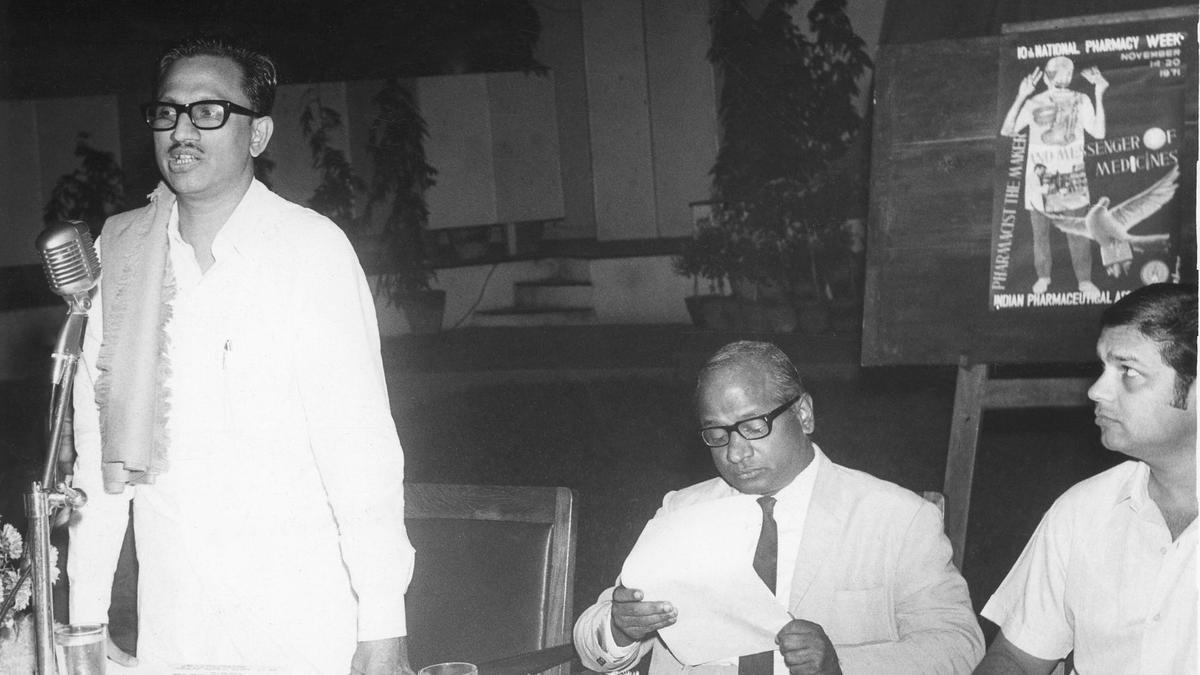
K. Anbazhagan opposed Gold (Control) Rules, saying it treated only symptoms, not the disease
The Hindu
Gold's significance in Indian culture, past attempts to control its possession, and the eventual abandonment of such regulations.
Gold has always been a precious and valued asset for Indians. It has an added importance in view of its widespread use in times of weddings. Indians’ sentimental attitude towards the metal only accentuates the price, which recently hit a new high. In the past, attempts were made to control the purchase or possession of gold. A serious bid was made in the 1960s, and there was a Tamil Nadu connection to it.
On the night of January 9, 1963, the then Union Finance Minister, Morarji Desai, in a nationwide broadcast [an act which has ordinarily been performed by Prime Ministers], announced that possession of gold, with the exception of ornaments and small quantities in other things, without declaration, would be illegal under the Gold (Control) Rules. Under the rules, production of gold jewellery above 14 carat was banned and a licence was required for refining gold. The new measure was brought in through an amendment to the Defence of India Rules. The major reason cited for the decision was smuggling, which led to the loss of several crores of rupees in foreign exchange. At that time, gold import was banned.
The industry voiced apprehensions that the Gold (Control) Rules would affect jewellers holding stocks of gold ornaments (who were given a period of transition for disposal) and thousands of goldsmiths who would be thrown out of employment. The government then assured the gold industry of “sympathetic implementation” of the Rules. It also went in for a Gold Bond Scheme.
However, the response of the industry was negative. In the meantime, Desai ceased to be the Finance Minister in the wake of a shuffle of the Union Ministry. Several amendments were made to the Rules. A major modification came in November 1966, when the 14-carat restriction on the manufacture of ornaments was withdrawn. In June 1968, an ordinance was promulgated, the only new feature of which was that the transfer of five genuine gold coins was allowed by way of gift or exchange. Otherwise, there was no basic change in the pattern of gold control, reported The Hindu on June 30, 1968.
A few weeks later, a Bill was tabled in the Lok Sabha by Desai, who was, by then, back as the Finance Minister. The Bill was referred to a joint parliamentary committee.
It was during the deliberations of the committee that the Tamil Nadu link emerged. There were 12 MPs, who recorded their dissent to the legislative measure, despite the changes suggested by the committee. One of them was K. Anbazhagan of the DMK, who represented Thiruchengode in the Lok Sabha.
In his brief but sharp response, the DMK’s nominee, who later became the Minister for Education and Finance in the Tamil Nadu government, recalled the introduction of the 1963 Rules and pointed out that “experience in the past five years and more has shown that none of these objectives — laudable as they were — has been fulfilled. I doubt very much whether they will ever be fulfilled with the measures, statutory or otherwise, taken by the government so far.”











